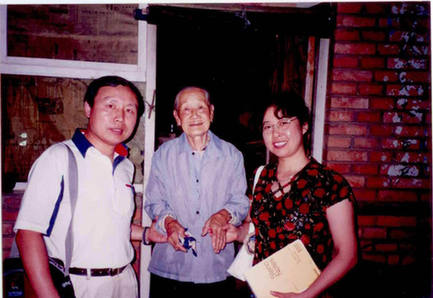“Comfort Women” Merit Remembrance
“According to the files of the central bank of Manchukuo, a puppet state in Northeast China and Inner Mongolia, the No. 7990 force of the Japanese Army spent 532,000 Japanese yen in four months on setting up ‘comfort stations,’” said Su. At that time, the monthly salary of a second lieutenant was less than 100 Japanese yen. “The files show that the Japanese government invested a lot in ‘comfort women’ arrangements. Those files were copied to commanders of the Japanese army and its military police, showing that they were approved by high level officials and proving their validity,” Su said.
He went on: “The documents released this time and the archives I found from Japan’s Army Ministry, Navy Ministry, Ministry of Justice and Ministry of Foreign Affairs together show us a complete and well-enforced system.”
As the leading petitioner for the Memory of the World Program application of “comfort women,” Su said the documents China submitted include evidence from five entities: the Japanese Kwantung Army stationed in Northeast China; the police force in the foreign concessions in Shanghai; the puppet Manchukuo authorities and its central bank; and written confessions by Japanese war criminals. The submitted files present a clear picture of the “comfort stations,” from their facilities to statistics covering the number of Japanese soldiers and the number of “comfort women” that were allocated to them.
They also include 24 photos provided by Su that he has collected since 1992 by visiting many bookstores in Japan and reading various memoirs of Japanese invaders.
Kouhei Hana, a Japanese writer with the Chinese penname Hua Gongping, published a book called Military Comfort Women: Stories of UMI-NO-IE in Japan, in which he gives a detailed description of a “comfort station” run by his father for the Japanese Navy in Shanghai from 1939 to 1945. Six of the 24 photos provided by Su to the Memory of the World Program are from this book.
Su believes that evidence from various angles proves that the exploitation of “comfort women” was a carefully orchestrated action of the Japanese government and military; it was directly planned by the state government and military command and painstakingly implemented by its armies in different locations.
|
 |
|
Prof. Su Zhiliang and his wife Chen Lifei visit Zhao Cunni, a former “comfort woman”, in Shanxi Province in August 2000. |
Japan Must Face Facts
When asked why he wanted to include the plight of the “comfort women” in the Memory of the World Program, Su said that it was not about fostering anti-Japanese sentiment; he just hoped that future generations would draw lessons from the painful and inhuman events.
Su said that in 1972, when China-Japan diplomatic ties were resumed, the Chinese government and its people longed for China-Japan friendship and cooperation. As regards the issue of war, China hoped Japan would look introspectively at itself without needing prompting to do so. China, therefore, acted with restraint and didn’t repeatedly emphasize Japan’s war crimes; China even gave up the right to demand war-related compensation from Japan. Because there was no investigation on the “comfort women” issue for quite a long time after the war and many victims have now passed away, there are only a few witness testimonies to be heard today.
